Lavender is perhaps one of the most famous essential oil plants which are included in the mint family. Its oil is one of the most affordable, but this does not make it less valuable for the perfume industry and aromatherapy. A variety of civilizations, from ancient to Arabic, used the plant for many diseases.
Thus, a fact from a later history is known that in the 18th century, the inhabitants of the English town of Bucklebury escaped from the plague due to the fact that the production of lavender oil was located there. And recently, landscape specialists and just lovers of decorating their plots and balconies have paid attention to this plant.
Many gardeners love growing lavender but don’t risk planting it because they live in colder zones. In this case, there are two solutions, grow the crop as an annual, or cultivate cold hardy varieties.

Environmental requirements to plant lavender
Lavender care requires full sun, well-drained soil, and excellent air circulation. A bed for culture is prepared in advance by digging up the earth on a shovel bayonet, adding a little compost and wood ash.
Seedlings are planted in a permanent place when the danger of freezing temperatures, characteristic of the area, is over.
Growing lavender doesn’t need a lot of water.
Allow the soil to dry out between watering. In autumn, young grassy shoots are cut to 2/3 of the length of the stem, avoiding touching old branches.
If the gardener lives in an area where there is little snow, then the established plants need to be additionally covered with straw or dry leaves, and then with burlap. This will protect lavender from dry, harsh winds and cold winters. In the early spring, when it gets warmer, burlap, dead branches, and mulch are removed.

Practical applications of the lavender plant
A hardy humble, flowering lavender bush has extraordinary benefits for the body, mind, and spirit. Lavender doesn’t just repel moths. Its properties are useful for stress, depression, insomnia, and even for desserts.
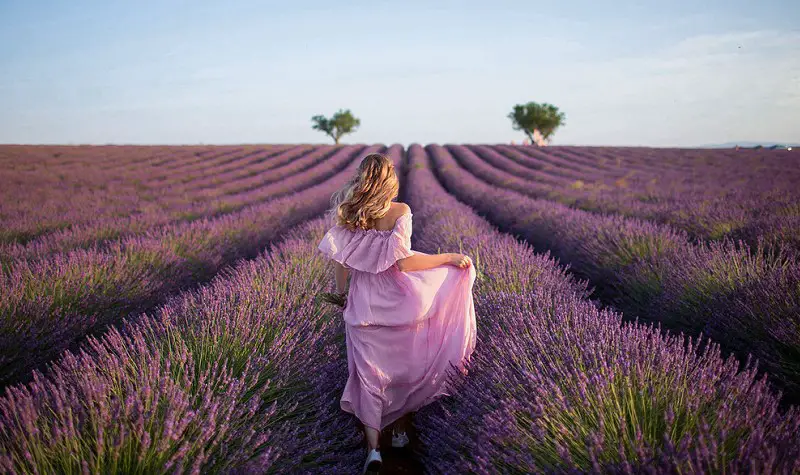
1. The aroma of lavender relieves stress. Fresh or dried lavender flowers have an intense fragrance that is enhanced when rubbed between your fingers. In order to cheer up in a matter of minutes, and relieve stress, you need to rub a few flower buds between your fingers and inhale the rising ethers slowly and deeply.
The aroma of lavender, its oil, will calm nervous tension, and relieve anxiety and panic attacks within a couple of minutes.
2. Tea with lavender. Made from flowers, it has a relaxing and calming effect. For a dessert spoon of dried or, fresh lavender flowers, pour a large cup of boiling water, and let it brew for 10 minutes. It goes well with jasmine, mint, and herbs with a calm taste. Lavender tea soothes, helps with bloating, and induces restful sleep with pleasant dreams.
3. Perfume with lavender. Lavender oil can be used as a perfume, rubbing a drop in the hair, or dripping on the wrists. Lavender pairs with patchouli, ylang-ylang, cinnamon, rose, jasmine, lemon, and bergamot – any combination can be your exclusive scent.
4. Bath with lavender. To help you relax, boil water in a small saucepan, add a handful of lavender flowers, and let it steep for 10 minutes. Squeeze the large flowers into a saucepan, and pour the decoction into a hot bath. A few drops of essential oil won’t hurt either. Lavender in cosmetology works wonders, for example, treats stretch marks.
5. Lavender for restful sleep. For pleasant dreams and restful sleep, put a couple of drops of lavender oil on your pillow.
6. Lavender for germs. The antiseptic, wound-healing properties of lavender oil can be used for insect bites – it relieves swelling and itching and cleanses the wound of microbes. There are many medical uses for lavender.
7. Lavender in cooking. Pounded in a mortar, lavender flowers in a small amount will be the highlight of your custards, jellies, and cookies. Experiment with lavender in cooking.

Types of lavender plants
The hardest variety of English lavender is Lavandula angustifolia. It blooms earlier than other representatives of the species and has short stems. Its flowers have a sweeter scent but contain less camphor in their essential oils.
The second type of lavender plant that can winter in the middle lane is Lavandin X, a hybrid of Lavandula Angustifolia and the slightly less hardy Lavandula spicata. The Lavandin X hybrid has taller flower stems and larger plants, as well as slightly delayed flowering.
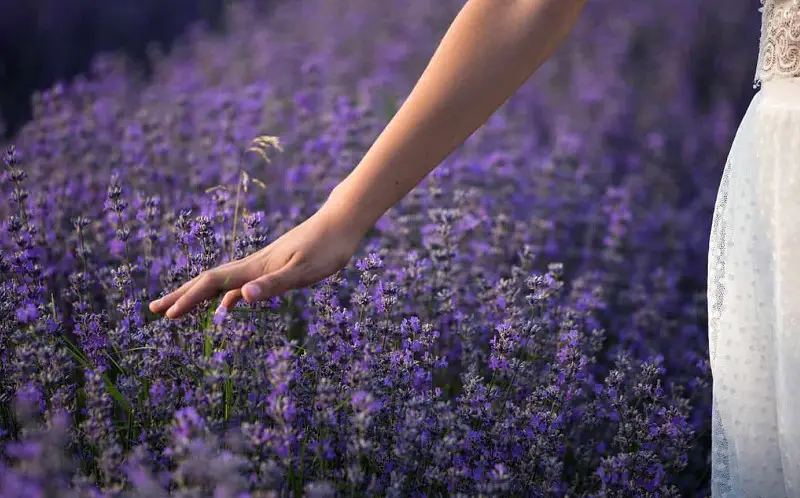
The essential oil contains a large percentage of camphor, which gives the plantings a stronger, sharper, and cleaner smell that will attract butterflies.
The next type is Lavandula Latifolia (it is also called Portuguese lavender or spicy lavender). This type of broad-leaved lavender is native to the western Mediterranean region, growing from central Portugal to northern Italy (Liguria), as well as in Spain and southern France.
Hybridization can occur, in the wild, with Angustifolia lavender.
The smell of broadleaf lavender is much stronger than the scent of narrow-leaf lavender, it has a higher camphor content and a more pungent smell, for this reason, these two varieties are grown in separate areas. In height, the shrub grows from 11 to 31 inches, the flowers are pale purple, and it blooms from June to September, depending on weather conditions.
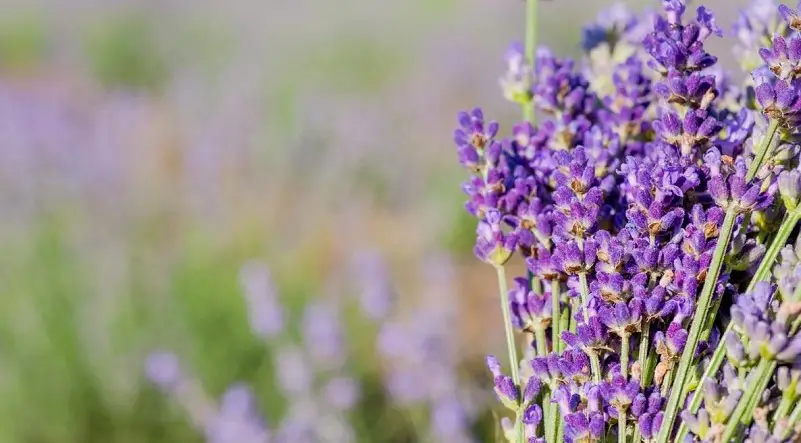
All of the above types have many varieties bred and selected for quality and purpose. They are mainly used:
- for filling sachets with dried buds;
- production of dried bouquets;
- as a culinary spice;
- in the form of extracts of essential fragrant oils;
- as beautiful garden flowers.
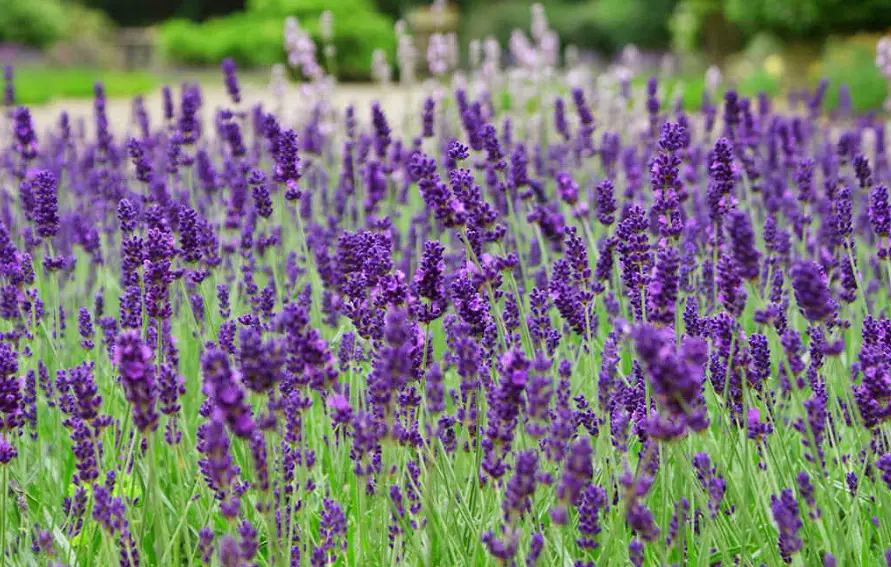
Varieties of English lavenders
Munstead lavender
Munstead is the hardest cultivar and has light purple flowers with narrow green foliage. It can be propagated by seeds, stem cuttings, or purchased young plants from a nursery. This lavender plant grows to 12-18 in tall and, once established, will require little maintenance except for snowy winter protection.
Munstead is a versatile lavender with a strong, wonderful fragrance, but its stems are often twisted. Therefore, it is more suitable for drying flowers and buds than stems. Manstead tolerates winter temperatures in the range of 14 to -10 °F without any problems. If examined by the hardiness zones, it is quite cold-resistant in zone 5.
Hidcote lavender
Another variety included in the English lavenders is the Hidcote. It is the well-known lavender awarded with the Garden Merit. It has straight stems and is excellent for cutting. The foliage of the variety is gray, and the flowers are more purple than blue. The shrub is shorter than Munstead, reaching a maximum height of only about 11 in.
Its petals have a deep, rich color, so the variety is often used for drying, as after that, the brightness remains almost intact. Even after drying, the flowers and stems continue to emit a delicate, sweet lavender scent. Resistant to frosty winters (5 to -8 °F), while preferring reliable snow cover or additional winter protection.
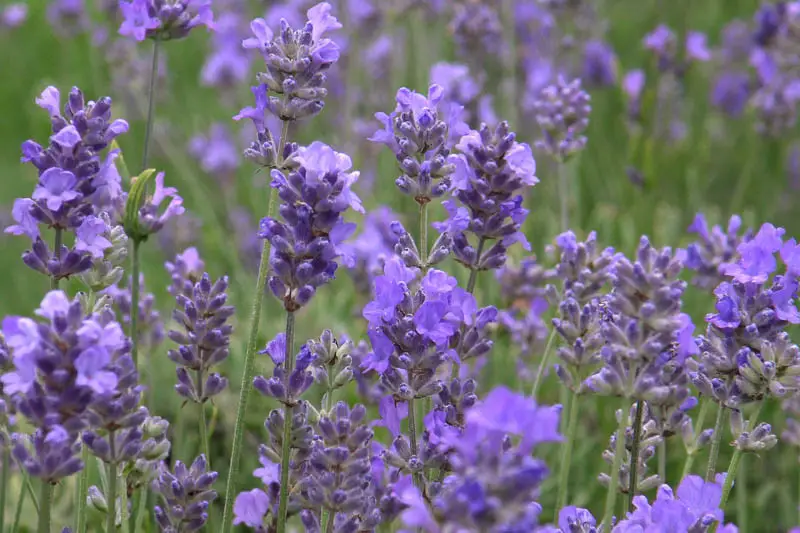
Twickel Purple
Twickel Purpleis a cold-tolerant sort included in the English lavenders. The variety belongs to the cold hardy lavender with long evergreen boughs. It has a wonderful smell and is an excellent honey plant.
Twickel Purple is taller and showier than Manstead, and clumps of beautiful lavender blooms look great in the garden. The long stems are suitable for drying or using lavender sprigs for arranging bouquets. The variety has one drawback, after drying, the color of the petals fades greatly.
Phenomenal
Phenomenal is a new hybrid of cold hardy lavender that is cultivated in cold climates. It grows much taller than Hidcote or Munstead, reaching a height of 23-33 in. Phenomenal has silvery foliage with purple-blue flowers and a bush shape very similar to French lavender.
It contains the largest amount of essential oil among all varieties of lavender and is an excellent honey plant. The variety is good for use in fresh or dry flower arrangements.
Although Phenomenal loves hot, humid summers, it is very hardy in cold temperatures, especially if it has reliable snow cover. If the thermometer scale relentlessly drops down, and frosts intensify, it is recommended to provide the lavender plant with additional shelter.
For a stunning flower bed look, plant several varieties of lavender side by side, placing Phenomenal at the back, Munstead in the middle, and Hidcote plants at the front of the flower bed. During flowering, together they form a magnificent combination of shades from blue to purple.
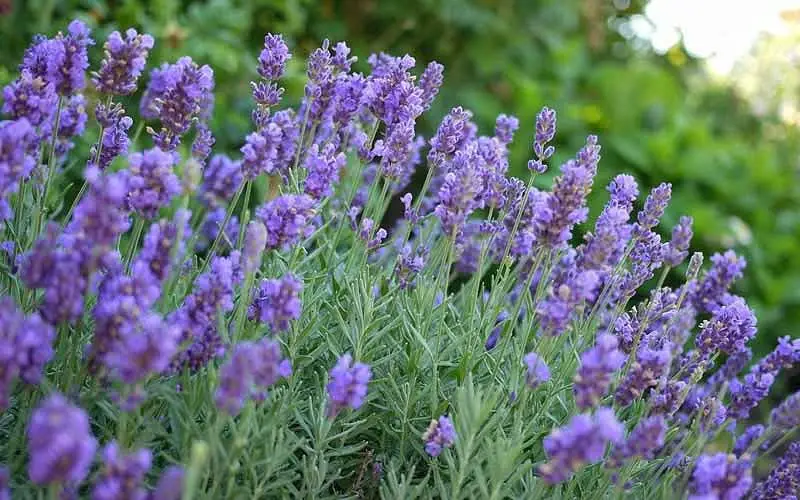
Little Lottie
Lavender Little Lottie is a dwarf variety of English lavender that grows to be about 12 in tall. The cultivar has pale, purplish-pink flowers set over green-gray foliage. Winter hardiness is not bad, so undersized grass is intended for growing in a hanging basket. When grown outdoors, Little Lotta withstands frosts in the range of 23 to 20 °F.

Lady Anne
Lavender narrow-leaved Lady Anne – a compact variety of English lavender, the maximum height of the bush is about 17 in. The flowers are pale pink with a light, unobtrusive aroma. When planted in open ground, Lady Anna goes well with medium-sized varieties that have purple buds. It hibernates without shelter at frosts not higher than 27-23 °F.
Lullaby Blue
Lavender narrow-leaved Lullaby Blue – a bush strewn with rich purple-blue flowers. Lavender plants reach about 24 in height, this is a good choice if you need a flower fence along the paths. It is an excellent honey plant, with low frost resistance down to 23 °F. With good winter shelter, it can be grown in areas where winters down to -4 °F are not uncommon.

Varieties of French lavender
Three varieties of French lavenders are now at the peak of popularity – these are Grosso, Provence, and Fred Butin.
Grosso
Grosso is a cold hardy variety. It withstands cooler climates and temperatures down to -4 °F, but only if there is good snow cover. In snowless and cold climates, it requires additional ground shelter; otherwise, it may freeze. This lavender plant grows straight, with long stems covered with purple flowers.
Fred Butin
Fred Butin – the variety is resistant to moderate frosts (of 14 to 10 °F). The plant has light-colored leaves and pale flowers. It has a high decorative effect, thanks to which it fills perfectly free areas in the garden. Prefers mild winters, so do not try to grow a variety without shelter beyond the middle lane.

Provence
This is a long-stemmed Lavandin X, which is bred in order to collect inflorescence after drying. Has an amazing aroma. Its amazing buds are used in Herbes de Provence, and its dried buds are the most fragrant of all known varieties. Does not tolerate severe frosts. It is cold hardy in the cold regions of 23 to 20 °F.
Willow Vale
Lavandula stoechas Willow Vale is a powerful French lavender variety with gorgeous purple flowers. It has large and characteristic bracts.
Fragrant flowers are used for drying, they are removed from the plant as soon as the buds open.
When planted in secluded places protected from northern winds, it grows without additional insulation, withstanding cold climates down to 14 °F.
Fathead
Fathead is a vigorous French cultivar with a pronounced, pleasant aroma, good for drying. As a bed, it prefers weather-protected places with full sun and well-drained and aerated soil. The inflorescence of this variety is rich in nectar, and it is an excellent honey plant.
Combining the production of raw materials for the cosmetics industry with beekeeping, the Fathead plantations are located near the apiary. Cold hardiness is good. The variety is recommended for temperate climates.

How to let lavender overwinter without loss
Lavender needs well-drained soil. Without this, the melting snow and winter kill the plant. Planting lavender on a slope or providing excellent drainage under the bed (pads of sand and pea gravel), as well as planting on a hill, will allow you to grow lavender successfully in heavy clay soils.
The deeper the snow cover, the better. You can additionally throw snow on the bed with lavender. Plants are warm under the snow, and the temperature under such a shelter never drops below zero. Mulching with straw or spruce branches can also help.
When laying out a plantation, you should choose a place protected from the wind, which will significantly reduce the likelihood of plantings freezing. It should also be remembered that plants grow better in the ground than in pots. The soil in containers freezes quickly, so the root ball may die.

How to understand that the lavender has overwintered
After the arrival of spring, it’s time to rearrange the pots in place and open the lavender in the flower beds. Always wait until the danger of frost has passed. It is quite easy to understand that the lavender has overwintered – the branches will be green. And, in a dead plant, the branches will be black, and dark.
After opening the flower bed, it is very important to rejuvenate the flowers in the spring with strong pruning, which will ensure density and abundant flowering. It is ideal to do a haircut at the turn of March and April.
First, we remove the frozen, damaged, and dead stems, and then we shorten the shoots by a third. In order for the lavender to be as beautiful as possible, it is necessary to try to keep the rounded shape as much as possible during the spring haircut.

Fast and cheap propagation of lavender cuttings
If the grower is new to plant propagation, cutting lavender stalks in the early summer is a good way to start, as they root easily, and you can get many new seedlings of good varieties at no cost. For work, you will need:
- mother lavender bush;
- sharp knife;
- pots with a diameter of 10 cm;
- universal compost without adding peat;
- means for formation of the root ball (liquid or powder);
- transparent plastic bags, according to the number of pots.
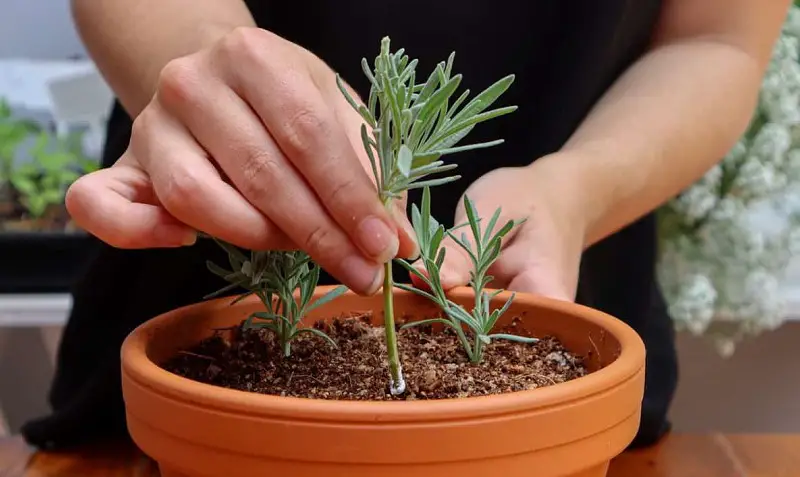
Cutting and rooting lavender:
- You should choose the shoots of this year that do not have flowers, after making sure that they are not damaged by pests or diseases.
- Choose side shoots, separating them from the main stem so that a thin strip of bark or “heel” remains on the cuttings. This condition must be observed since it is there that the root ball of young plants will develop.
- Pots with a hole in the bottom are filled with compost soil.
- On cut cuttings, the lower pairs of leaves are removed so that an even stem is obtained below, which can be carefully inserted into the compost.
- The cut end of each stem is dipped into the rooting preparation.
- Plant several cuttings in each pot, placing them along the edges of the container with sandy compost.
- The substrate is well watered, then cover the entire pot with a transparent plastic bag to maintain humid climates around the cuttings.
- Pots are placed in a warm, shaded place. Once rooting begins (usually four to six weeks), one of the corners of the plastic bag is cut off to create internal ventilation.
- The package is removed completely only after a few weeks. In this case, the cuttings are left in place until they are well rooted with the strong root ball. The signal for a subsequent transplant will be the appearance of new gray-green foliage. Each should be defined in individual container plants.
- It is best to arrange pots with cuttings in a partially shaded area, perhaps under the branches of garden trees.
It would seem that lavender belongs to the southern plants that do not tolerate frosty weather. But thanks to the work of breeders, in recent decades, many varieties have appeared that are distinguished by excellent resistance to sub-zero temperatures.
Despite this, every gardener knows that even frost-resistant plants require good fertile soil, a good plantation location, and sometimes, perhaps, additional shelter for the harsh winter weather.
In this case, even a tender variety will thrive, albeit in a cold climate with harsh conditions.
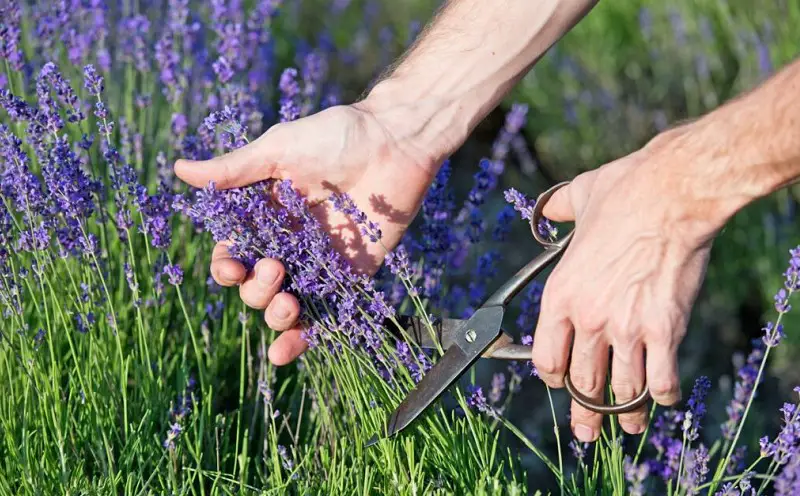
Conclusion
It is quite possible to grow lavender in cold regions with a cooler climate. It is important to choose varieties with good frost resistance and winter hardiness so that beautiful bushes do not freeze out. A large species diversity of culture allows you to find amazing plants with unusual colors or original shapes.
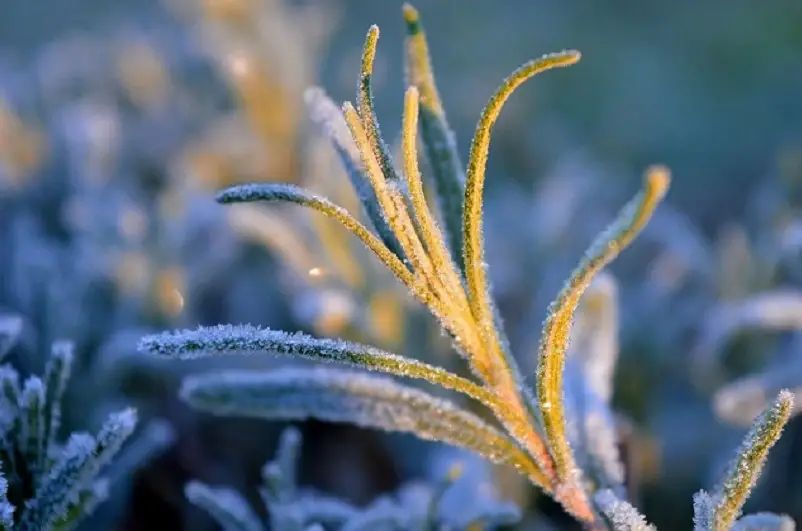
Frequently asked questions:
How cold can lavender tolerate?
Lavenders can successfully survive in winter. The frost resistance is influenced by many factors, depending on the planted species and growing conditions. On average, withstands frosts down to -13 °F. The main varieties were examined in the article above.
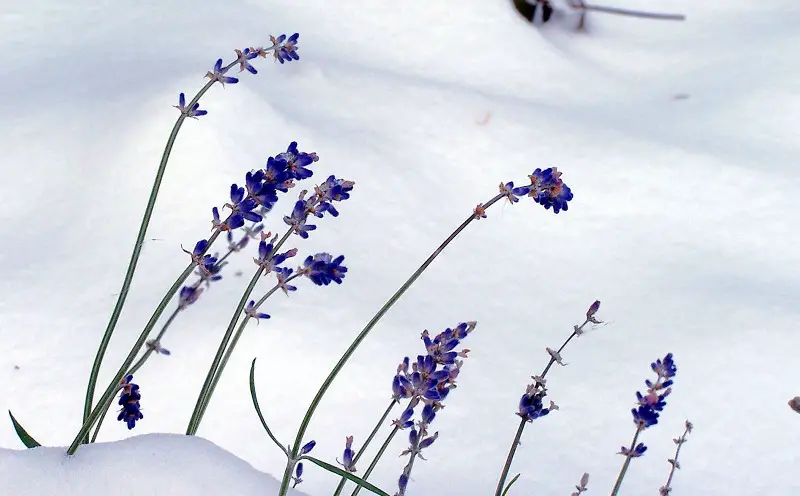
What is the most cold-tolerant lavender?
Blue Scent Lavender is a hardiness champion, able to withstand the cold climate, with winter temperatures as low as -20 °F. In addition, its large, fragrant purple flowers will brighten up your garden throughout the summer and fall. Its bushes are compact and unpretentious in lavender care. According to hardiness zones, it can withstand frost in zone 5.
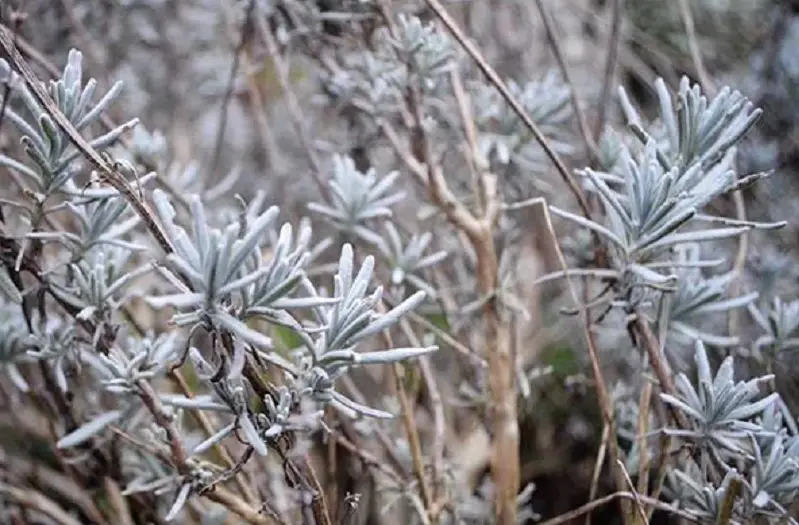
Can potted lavender survive frost?
Winter survival of the potted lavender indoors works well in both warm and relatively cool conditions, but flowering may be delayed. In general, compliance with the desired temperature regime is a problem in keeping potted plants in the apartments.
Watering lavender in winter should be very little and careful. It is bad if lavender grows in winter, we must try to make the plant rest in winter, and not grow. If the plant still grew during the winter, then in the spring, before you take the lavender to the balcony or garden, you need to cut off these growths.

Does lavender need to be covered in winter?
Lavender should be covered only when persistent cold weather sets in because during a thaw under a cap there can be root rot. If the winter is snowy and not too frosty, then shelter from branches may not be needed – there will be enough snowdrifts. Sometimes snow is additionally thrown over the lavender bushes to make a warm and thick blanket.
- Why Are There Still No Tomatoes in My Tomato Plants? Let’s Fix the Issue! - July 13, 2023
- Water Propagation White Stuff on Roots: Everything You Should Know! - July 11, 2023
- String of Dolphins Drying Up: Solved! - July 11, 2023
